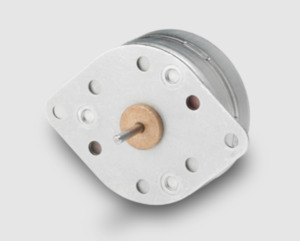
 |
Charlotte Stonestreet
Managing Editor |
| Home> | DRIVES & MOTORS | >Stepper Motors & Drives | >Stepper motors for HVAC applications |
Stepper motors for HVAC applications
20 October 2025
Rahul Bhor discusses the approach to enhance the thermal regulation of stepper motors in HVAC systems

MANY MODERN buildings rely on HVAC, and to control the dampers and valve mechanisms within these systems, stepper motors are commonly integrated. Moving in distinct, uniform steps that correspond to known incremental angles, stepper motors provide the precision required for repeatable control. As stepper motors also provide holding torque when the current is removed, this means they can maintain the position of the valve or damper without the need for power, saving energy as a result.
Given that HVAC systems must ensure comfortable conditions around the clock, another advantage of stepper motors is their reliability and durability. Unlike other motor designs, steppers don’t require feedback mechanisms like encoders or sensors to maintain positioning, which enhances design simplicity. Free of brushes, unlike brush DC motors, and only needing straightforward control electronics, like simple driver circuits, steppers ensure low maintenance and high reliability.
However, facing demanding conditions across the world’s hottest locations, HVAC units are installed outside, often in direct sunlight. This can generate high temperatures that place extra demands on stepper motor design. In these environmental conditions, the temperature of an HVAC system under operation could reach above 100°C, so the stepper motors on which these applications rely must be sufficiently rated.
Calculating temperature loading
The threat of excess heat on an unprotected stepper motor includes wire insulation degradation. Insulation materials used over magnet wires and lead wires can easily degrade when exposed to temperatures higher than their rating, which can cause breakdowns, short circuits, and ultimately, motor failure. Materials such as adhesives, plastics, metals, and magnets can also degrade at a faster rate or lose their strength when exposed to high temperatures, affecting the motor’s performance and reliability.
As temperature increases, the resistance of the motor’s coil also increases, leading to a decrease in current. Additionally, higher temperatures can reduce magnet strength. Combining these effects also results in decreased motor performance.
Moreover, as heat is generated in the motor due to copper losses, this will further increase the motor’s temperature. As a result, the ambient temperature alone cannot be used to determine the required rating for each component. Instead, thermal calculations are required to estimate the motor temperature for the motor’s duty cycle in the given ambient temperature.
Overcoming high-temperature challenges
The right selection of materials is crucial in overcoming the challenges of high temperatures. Magnet wire insulation, such as Class 155 or Class 180, can be used, along with high-temperature magnets. Designs with a high Curie temperature signify that magnetic properties are retained against high heat, so materials like samarium cobalt (SmCo) or neodymium iron boron (NdFeB) are commonly used.
Selecting the right lubricant for motors operating at high temperatures is also essential to ensure performance and reliability. The lubricants should be rated for high temperatures, including matching the appropriate viscosity grade. This also applies to adhesives used inside the motor, which should be reviewed to ensure they withstand the maximum operating temperature.
Following design, testing at high temperatures can confirm expected performance and reliability. A motion design specialist like Portescap can assist with a range of tests to validate the design. Ideally, this stage should include rotor assembly testing at increased temperatures, and thermal shock conditions in environmental chambers and ovens. Axial and torsion force tests at specific temperature requirements can determine rotor mechanical strength, while accelerated life testing with higher temperatures can predict a motor’s service life.
Rahul Bhor is an engineer at Portescap
- Flat Motors: Compact size with high power density
- Integrated driver that saves space & time
- Best-in-class motion solutions
- Trends in powering surgical hand tools
- Understanding the effect of PWM when controlling a brushless DC motor
- High torque gearhead
- Ultra high torque in a compact package
- Online dynamic motor selector
- DC motor with integrated driver
- Portescap expands flat motor portfolio



















